Posted by Elena del Valle on October 28, 2014
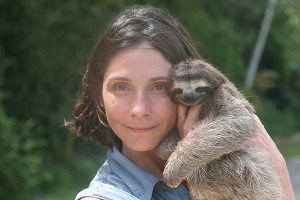
Ana Salceda poses with a sloth rescued from a hazardous road crossing in Panama
Photos: Thirteen Productions LLC
In these times of extensive development many are forced to leave their placid homes to make way for malls, residential complexes and commercial projects. Such is the case for sloths in parts of Latin America. In Panama, for example, the expansion of the Panama Canal has forced wild animals out of their habitats.
Among those affected are sloths. On November 5 between 8 p.m. and 9 p.m., Nature, a PBS series, will air for the first time A Sloth Named Velcro, a 50-minute documentary about sloths filmed in Panama, Costa Rica and Colombia. An editorial video clip without a hold harmless clause was not available for this article.

An adult sloth high in the canopy in Panama
The film is centered around Ana Salceda, a Washington D.C. area-based Spanish print and television journalist, as she returned to Central and South America to document sloth conservation efforts. Years earlier, while on assignment in Panama, she adopted a baby two-toed sloth she named Velcro. Her relationship with Velcro sparked an interest in sloths that remains alive today.
“I hope viewers see beyond sloths’ cute Mona Lisa smiles, and realize how fascinating, complex, and vulnerable they are. I hope they’re inspired by people like Tinka Plese, who is featured in the film and whose Aiunau Foundation rehabilitates displaced sloths and returns them to the wild,” she said about the documentary in promotional materials provided by the network. “And I hope my relationship with Velcro shows people how nourishing the human-animal connection can be, how it brings us closer to nature, and to ourselves.”

A mother sloth surrounds her young offspring in Panama
For many years, sloths were believed to be lazy animals who slept for most of their existence. Lately, they have become a hot topic among scientific researchers and black market pets. The film points to new studies that show the gentle creatures are not so sloth-like. To demonstrate their point Ana joins Bryson Voirin and his colleagues from the Max Planck Institute as they carry out a landmark study in the field about the sleep habits of sloths. Voirin discovered that, as opposed to their captive relatives, wild sloths sleep only about as much as humans. According to other studies, sloths are not as solitary as scientists used to think, they have social structures, and males keep harems. Surprisingly, recent research indicates sloths move like primates, only upside-down. The documentary features two-toed, three-toed and pygmy sloths.
A Sloth Named Velcro was produced by BelugaSmile Productions and Thirteen Productions LLC. Nature is a production of Thirteen Productions LLC for WNET. While PBS declined to provide budget numbers for the project, some of the funding sources were: Arnhold Family in memory of Clarisse Arnhold, Sue and Edgar Wachenheim III, Estate of Elizabeth A. Vernon, Lillian Goldman Charitable Trust, Kate W. Cassidy Foundation, Filomen M. D’Agostino Foundation, Susan Malloy and Sun Hill Foundation, Corporation for Public Broadcasting and public television stations.
Posted by Elena del Valle on October 24, 2014
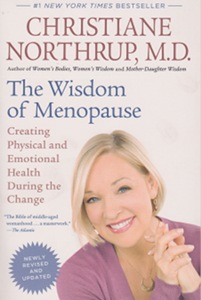
The Wisdom of Menopause
For 25 years Christiane Northrup, M.D. was a practicing physician in obstetrics and gynecology, identifying issues and treatments for patients. Now she dedicates “the second half of my life to illuminating all that can go right.” Her efforts may be welcome by many among the 48 million women in the United States in midlife, undergoing perimenopause or menopause.
She believes menopause is “a mind/body revolution, which brings tremendous opportunity for happiness” instead of the often described problem phase of women’s aging packed with a collection of symptoms to be fixed. In 1994, she shared her views in Women’s Bodies, Women’s Wisdom, her first book which went on to become a New York Times Best Seller.
In Women’s Bodies, Women’s Wisdom Creating Physical and Emotional Health During the Change (Bantam Books, $22), also a New York Times Best Seller with 1.25 million copies sold in 16 languages, she discuses her conviction that many physical ailments are born from lifestyle choices and emotional concerns. The 745-page book, most recently updated in 2012, is divided into 14 chapters in which she discusses topics such as the brain, breast health, hormones, pelvic health, food and supplements, healthy bones, sex and sleep, and heart health.
In the book, she indicates menopause leads to a new stage filled with changes, both physical and emotional. They are not, as thought in the past century, a sign of inevitable aging and decline. Instead, they lead to a woman’s transformation, and a time when she must examine her life closely and choose who she wishes to be all over again. She points to a 1998 Gallup survey at the North American Menopause Society in which more than half of respondents between 50 and 65 indicated they were living the happiest time in their lives.
She is convinced that as women go through their midlife adjustments they are drawn less to a traditional supportive family role and more to new adventures and pursuits outside of their home life. That is in contrast to men in the same age group, the author says, because they in turn seek fulfillment in relationships more than in their work, a reversal of their approach in previous years.
According to her website, Northrup has more than 4.4 million books in print, in 24 languages. Her book Mother-Daughter Wisdom was voted Amazon’s top book of the year in parenting and mind/body health.
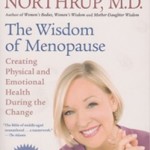
Click to buy The Wisdom of Menopause (Revised Edition)
Comments:
Filed Under: Books
Posted by Elena del Valle on October 17, 2014
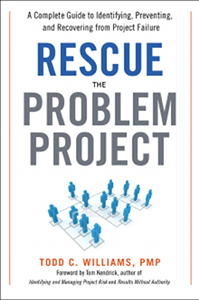
Rescue the Problem Project
Photos: Visibility Strategist
For years Todd C. Williams was the informal go to person when a problem project needed attention. He would discuss the project issues with the team in charge and pass his ideas back to the decision makers. They would in turn review them and eventually, if he succeeded in convincing them, approve them. In time, he fine tuned his process and went up the ranks. Now he is president and executive consultant at eCameron, Inc., a project rescue company based in the state of Washington.
In his book, Rescue the Problem Project: A Complete Guide to Identifying, Preventing, and Recovering from Project Failure (AMACOM, $39.95), he explains how he and his team identify a problem project, and how they recover it before it fails or has to be canceled. He shares with readers his process for rescuing red projects that focuses on root cause correction and prevention. He points out that 65 percent of projects fail to meet their goals and 25 percent of projects require cancellation.

Todd C. Williams, author, Rescue the Problem Project
The 277-page hardcover book published in 2011 is divided into twenty chapters and six main parts: Understanding the Process and Realizing a Problem Exists, Auditing the Project: Understanding the Issues, Analyzing the Data: Planning for Project Recovery, Negotiating a Solution: Proposing Workable Resolutions, Executing the New Plan: Implementing the Solutions, and Doing It Right the First Time: Avoiding Problems That Lead to Red Projects. He relies on case studies, mostly from manufacturing and information technology projects, to illustrate his steps and process. The end of each chapter includes a summary or Chapter Takeaway.
In the book, he identifies aspects he relies on in his problem solving: the team holds the answers, a strong team can solve most problems, remaining involved with the team is essential, and it is important to remain involved with the team in order to resolve the situation. He also describes his recovery process steps: realizing there’s a problem, figuring out what the problem is, identifying the causes for the problem and the possible solution, negotiating a solution everyone can agree on, and implementing the steps to solve the problem. He points out that it is essential for management to recognize that there is a problem before any of the other steps can be taken and the project rescued.
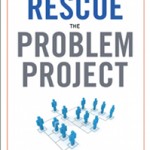
Click to buy Rescue the Problem Project
Comments:
Filed Under: Books
Posted by Elena del Valle on October 9, 2014
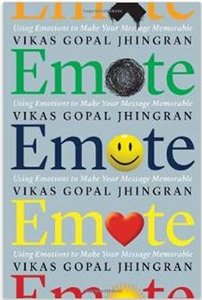
Emote
Photos: Career Press
As manager of a team of engineers at Shell Oil Company Vikas Gopal Jhingran, a Massachusetts Institute of Technology-trained engineer and researcher with a Ph.D., had demonstrated his engineering competence frequently, he says; but when it came to client presentation he was out of his comfort zone. A combination of his introverted personality and his immigrant status made public speaking a challenge hard to overcome until he determined to apply himself to improve his verbal communication skills.
By 2007 he became Toastmasters International World Champion of Public Speaking, and the second person of Asian origin to achieve such a distinction. In Emote: Using Emotions to Make Your Message Memorable (Career Press, $15.99), a 223-page softcover book published this year, he shares the insights he gleaned from his personal journey with others, especially introverts and immigrants like himself.
The book is divided into fifteen chapters, an Introduction and an Epilogue spread into three main sections: The Fundamentals, The Mechanics of Speaking, and Other Benefits of Good Communication Skills. The author shares, among other insights and ideas, his experience, emotion based approach and the speeches that led to his public speaking win in 2007.

Vikas Jhingran, author, Emote
One of the speeches was about his decision, while living in Texas, to have his mother in India arrange his marriage for him. The second speech was born of a feeling within him that he was not living life to the fullest and his desire to inspire the audience to live life for the moment. The idea behind the speeches was to make his point by moving the audience. Connecting at an emotional level with the audience, he believes, is the secret to his success.
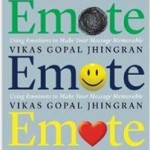
Click to buy Emote
Comments:
Filed Under: Books




















